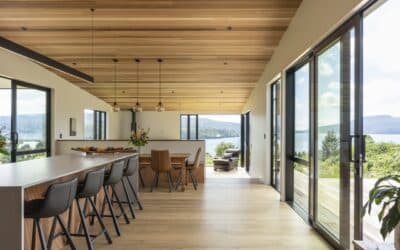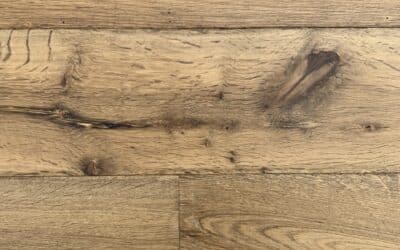This guide describes the benefits of engineered wood flooring compared to solid wood flooring, and we also address some of the myths about both types of wood floors.
Why choose engineered over solid? Engineered oak from Europe gives you big‑board beauty without the movement issues of solid timber. It’s real wood—but built to handle concrete subfloors, underfloor heating, and NZ humidity. And because it’s factory‑finished, once it arrives you can install it straight away and even move furniture back in the next da
LIFE-SPAN
ENGINEERED WOOD
Most engineered wood floors will last you over 35 years to a lifetime, depending on wear and tear. The 2.5mm to 4mm or even a 6mm hardwood top layer can be sanded several times over the life of the floor. If your floor has a natural finish then you’ll be maintaining the finish regularly by adding more oil to the floor – scratches can be repaired this way, meaning you may never need to sand the floor at all and your floor will last a lifetime.
SOLID WOOD
Solid wood planks can only be sanded down to just above the level of the plank tongue. This means that only about 5-6mm of wood is available for sanding. Furthermore, when installing the solid wood floors they must be aggressively sanded in order to ensure the surface is completely flat. You can easily lose several millimetres of precious wood during this process. Solid wood planks should last from 50 years to a lifetime.
We believe the lifespan of solid wood when compared to engineered wood is consistently over-stated, most engineered wood flooring will last you just as long.
COST
ENGINEERED WOOD
Most engineered wood flooring is supplied prefinished, with the colour and finish (lacquer, UV oil or natural oil) applied in the factory. The cost to apply the finish in a factory is inexpensive, resulting in a very competitive, finished floor that is ready to live on after installation.
SOLID WOOD
By comparison most solid wood flooring is supplied as raw wood planks, and must be finished on site; this involves messy & time-consuming sanding and application of several layers of finish at great expense.
SOPHISTICATED WOOD TREATMENTS
ENGINEERED WOOD
Premium engineered wood flooring comes with a huge range of surface treatments and finish options. Interesting new textures are released regularly. Popular options include smoked oak, thermo-treated wood, band sawn, planed, scraped, cross texture, fossil sawn, distressed, aged, brushed,the list goes on. These textures and finishes are applied in advanced factories in Europe where craftsmanship, passion for wood and the latest technology combine to produce beautiful and distinctive wood flooring.
SOLID WOOD
By comparison solid wood is usually sanded flat on-site, then a polyurethane or oil is applied to the flooring. Solid wood is almost always square edged, lacking the variety of floorboard edge types available with prefinished wood flooring.
FINISH QUALITY
ENGINEERED WOOD
As the finish is applied in modern state of the art factories using the latest European automated coating lines this assures durability and the finish coatings are applied in a very precise and consistent manner. It’s difficult to fault this method of finish application. There is no risk of sanding marks, coating lines on the floor, uneven coating texture, flaking finishes or other common problems associated with site-finished floors.
SOLID WOOD
As the finish is applied in the dwelling you have to rely 100% on the skill of the floor-sander and trust they will use high quality finishes. The range of finishes available to floor sanders in NZ is tiny compared to the vast range of high-tech industrial finishes available in Europe.
Humid weather can play havoc with curing times and if there is time-pressure and additional coatings are applied before stains have cured, the finish may not be as durable as it should be.
Often coatings are applied on-site unevenly, or sanding marks are visible – it is literally impossible to apply a floor finish in the home to the same level of quality as that which is applied on a modern production line.
QUICK & EASY INSTALLATION
ENGINEERED WOOD
Engineered wood flooring is the clear winner when it comes to convenience. As it is so stable, in most cases you can deliver and start installation almost immediately without having to worry about acclimatisation. The flooring can be walked on immediately after installation and you can move furniture onto the floor within 24 hours of completion (or immediately, if installed as a floating floor).
SOLID WOOD
Solid wood planks must be delivered a few weeks beforehand so the wood can acclimatise to interior humidity levels – otherwise you’ll run the risk that the floorboards will move too much after installation causing big gaps between planks, or cupping and warping.
Once the solid wood floorboards are installed & ready for finishing the delays continue. It can easily take a further 5 days to apply the finishes.
The process to acclimatise, install, sand and finish solid wood can take 3 times longer than the simple installation of a pre-finished engineered wood floor.
GAPS, CUPPING & WARPING
ENGINEERED WOOD
Gaps cupping and warping are less likely to occur with engineered wood floors as the multi-layered wood expands and contracts at less than half the rate of a solid wood floor. However some gaps are to be expected as wood is an organic material; boards may not be perfectly straight – it’s wood after all, and the boards are also subject to shrinkage and expansion from atmospheric and interior conditions. With T&G engineered wood flooring some gaps may be visible during installation, which can be filled with filler if desired. Humidity fluctuations may cause planks to shrink further over time. If a patented click-system is used you’ll not see gaps between the planks at time of installation, however over time the boards will still expand and contract and therefore some gaps may still appear.
SOLID WOOD
If you’ve ever looked at a solid wood floor installed in a villa in New Zealand, you’ll be aware that unsightly looking gaps can appear as the planks adjust to climactic conditions. The gaps can certainly be larger than what might be expericned with engineered wood floors.
Even worse, solid wood is at high risk of expanding too much after installation causing the planks to cup or warp, and the floor to fail. There is an especially high risk present when installing over concrete due to the amount of moisture present in the slab. Other risk factors include under floor heating and temperature and humidity fluctuations.
PLANK WIDTH
ENGINEERED WOOD
Wide planks from 180mm up to 300mm bring a sophisticated, generous atmosphere to your interior and are incredibly popular. Because of the multi-layered plank construction, these wide planks can safely be installed in difficult environments such as with under-floor heating or in humid climates, without any risk of gapping, warping or floor failure.
SOLID WOOD
Wide planks made from solid wood are a recipe for disaster. For this reason solid wood such as oak is often supplied in medium widths such as 150mm or less. Solid wood simply moves too much from humidity fluctuations, therefore plank width needs to be kept to a minimum to ensure the floor will not expand or contract too much.
CONCLUSION
Many people are attracted by the idea of having a solid wood floor, it is after all the traditional choice. The difficulties that may arise are myriad. Non-engineered solid wide-plank wood floors will inevitably continue to expand and contract after installation. Decreases in humidity in the exposed wear surface can cause cupping (concave curving) as the top of the plank dries out. Potentially, large gaps may appear between the boards as each board dries and shrinks. Increases in moisture content may generate excessive compressive forces around the floor’s perimeter, perhaps even causing the floor to lift in the most stressed areas. Solid wood will always distort.
Engineered wood is simply solid wood improved. Prefinished engineered wood is the clear winner in terms of aesthetics and offering a more sophisticated appearance. It offers more protection from gaps (although they’re still possible) and floor failure, superior texture and finish options, superior finish quality and considerable cost and time-savings. Engineered wood uses about 1/3 of the precious hardwood so it is also the safe environmental choice.


